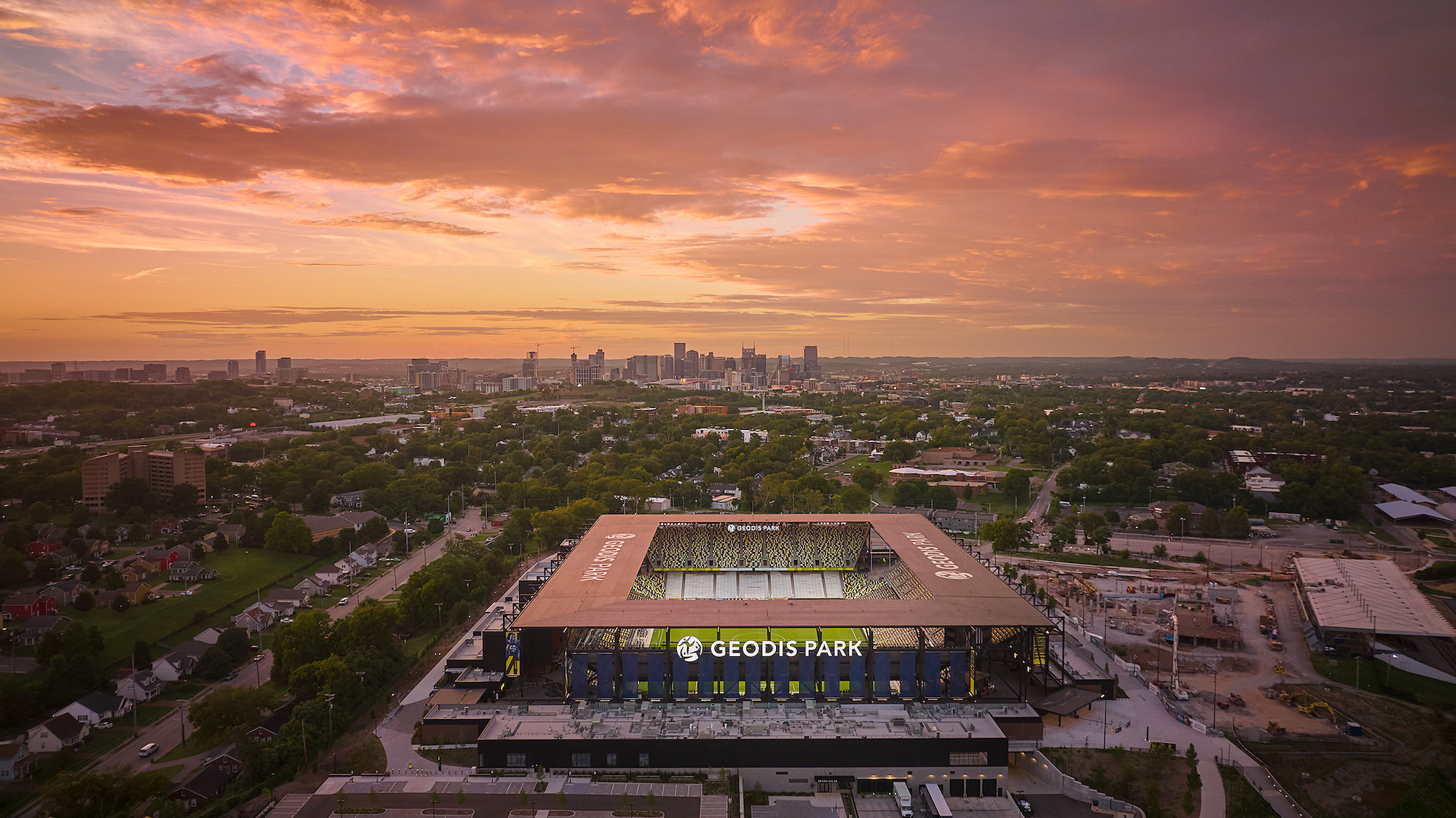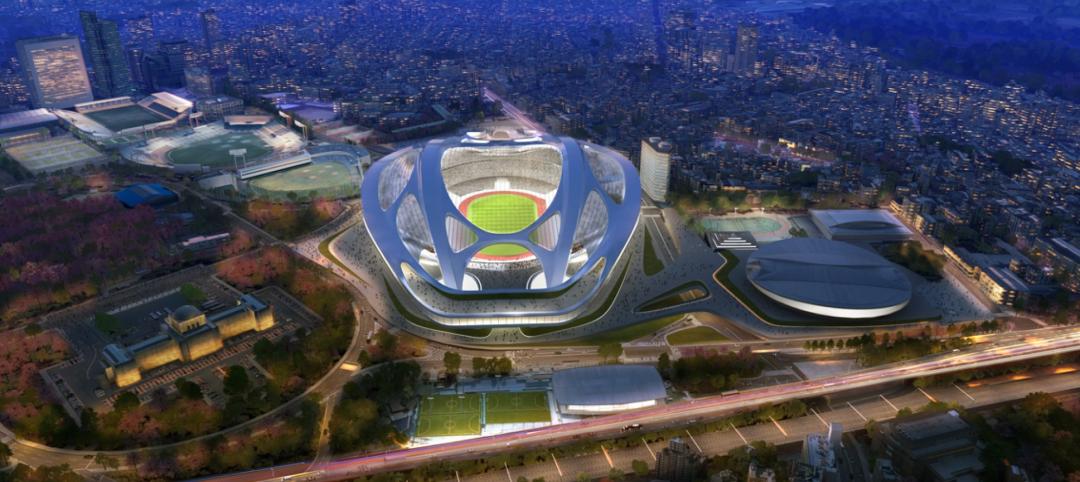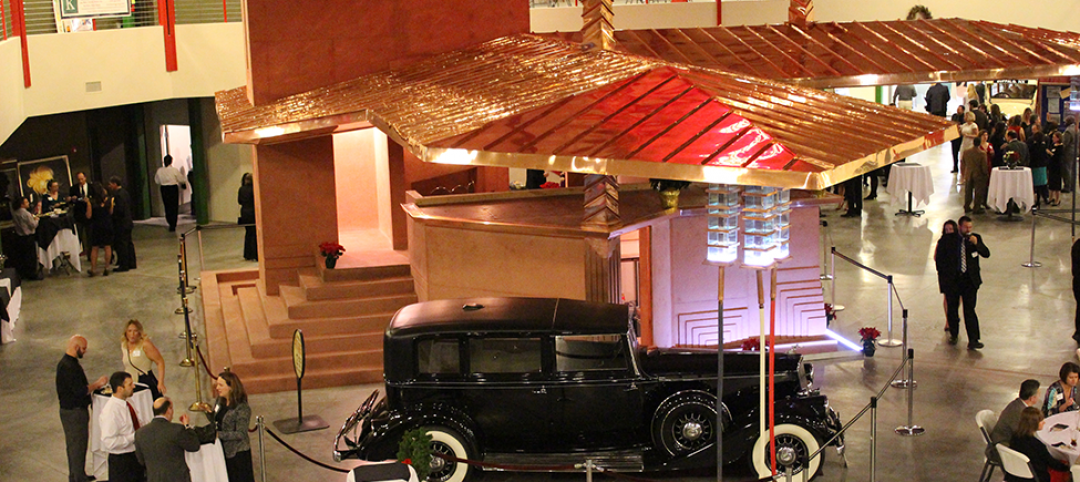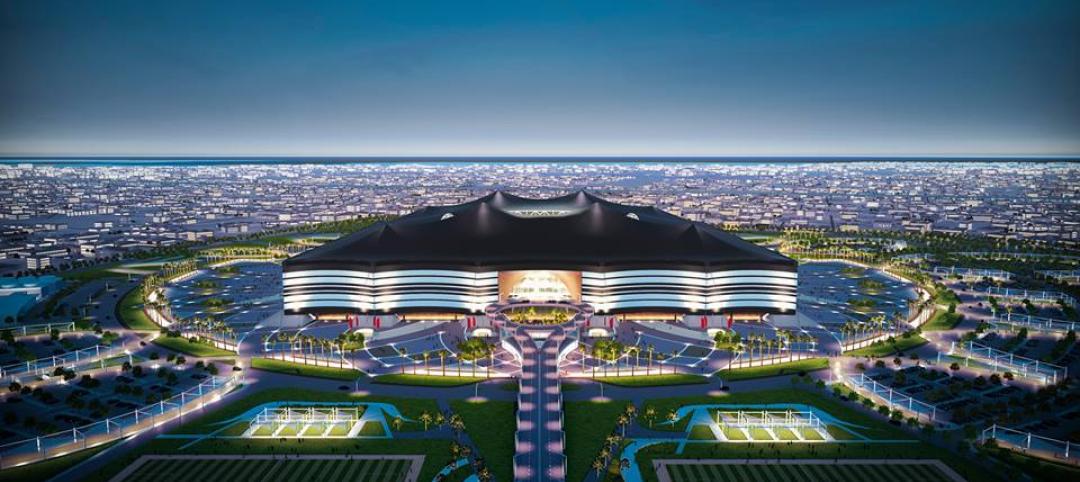At 30,105 seats and 530,000 sf, GEODIS Park, which opened in 2022, is the largest soccer-specific stadium in the U.S. and Canada. Created by design firms Populous and HASTINGS in collaboration with the Metro Nashville Sports Authority, GEODIS Park serves as the home of the Nashville Soccer Club as well as a venue for performances and events.
One mile south of downtown Nashville, GEODIS Park is located in Wedgewood-Houston, a neighborhood with former industrial factories alongside single-family homes. The stadium’s design reflects that history—with both the industrial scale of its high canopy structure and the residential scale of its brick-clad ground-level structures surrounding the concourse.
The open-air venue is protected by a 360-degree canopy. There are just 150 feet of distance between the touchline and the last row of seats, while a dedicated 3,150-sf safe standing supporters’ section provides the closest-possible sightlines to the pitch. A 65-foot-wide shared concourse features a variety of local concessions.
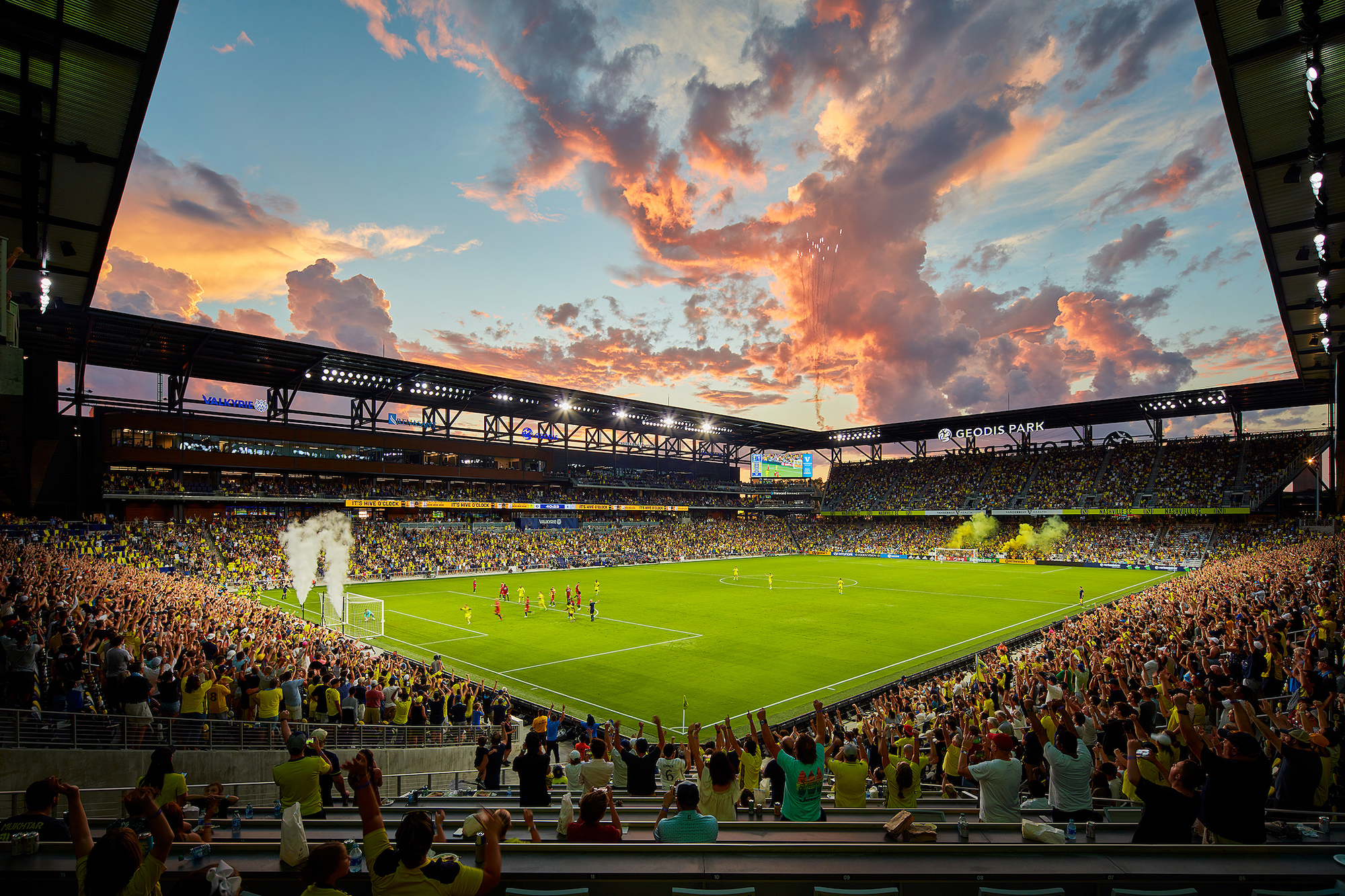
With 65,000-sf of open space surrounding the stadium’s footprint, the venue can be used year round by the community. This area includes a 17,000-sf park with an exterior-facing video board to host away game watch parties as well as community events. Situated within the Nashville Fairgrounds, the concert-ready venue has a capacity of 27,000.
GEODIS Park also offers three clubs: a luxury club experience, another club with a Nashville music-centric theme, and a third that has the feel of a classic sports bar with several televisions.
On the building team:
Owner: Metro Nashville Sports Authority
Owner’s representative: CAA ICON
Design architect: HASTINGS
Architect of record and design architect: Populous
MEP engineer: ME Engineers / DFH Services
Structural engineer: Walter P Moore / Logan Patri Engineering
Construction manager: Mortenson / Messer
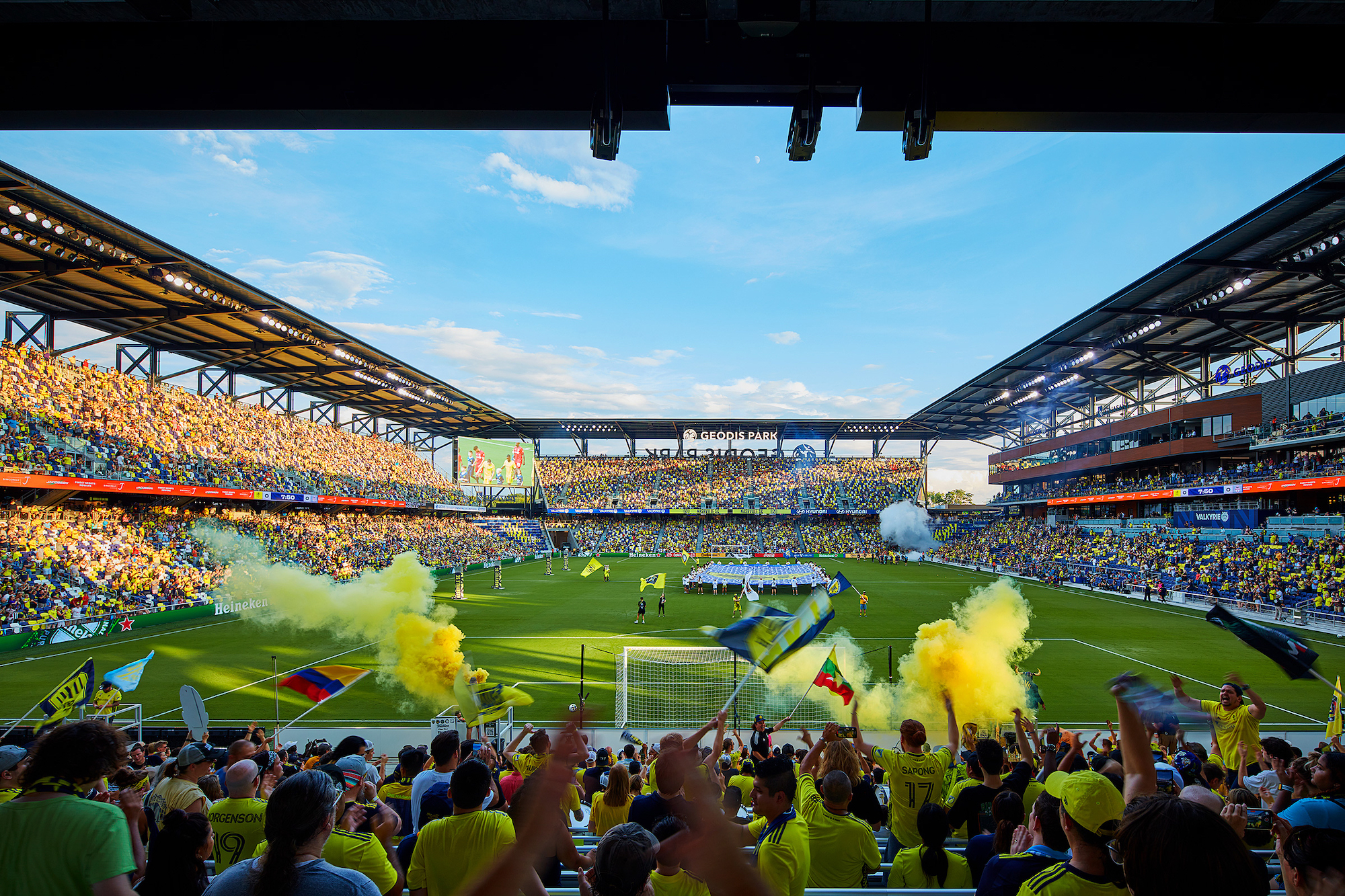
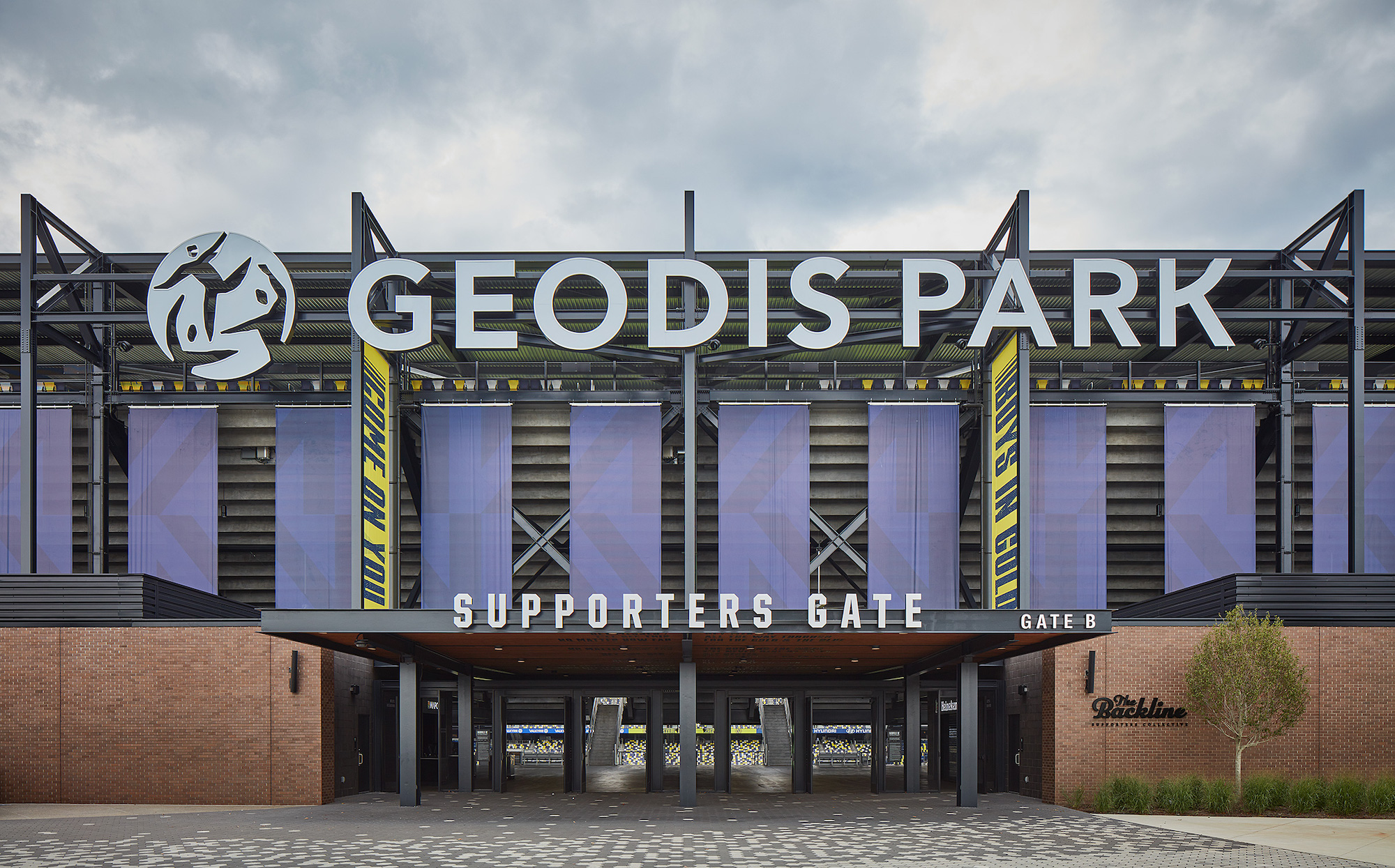
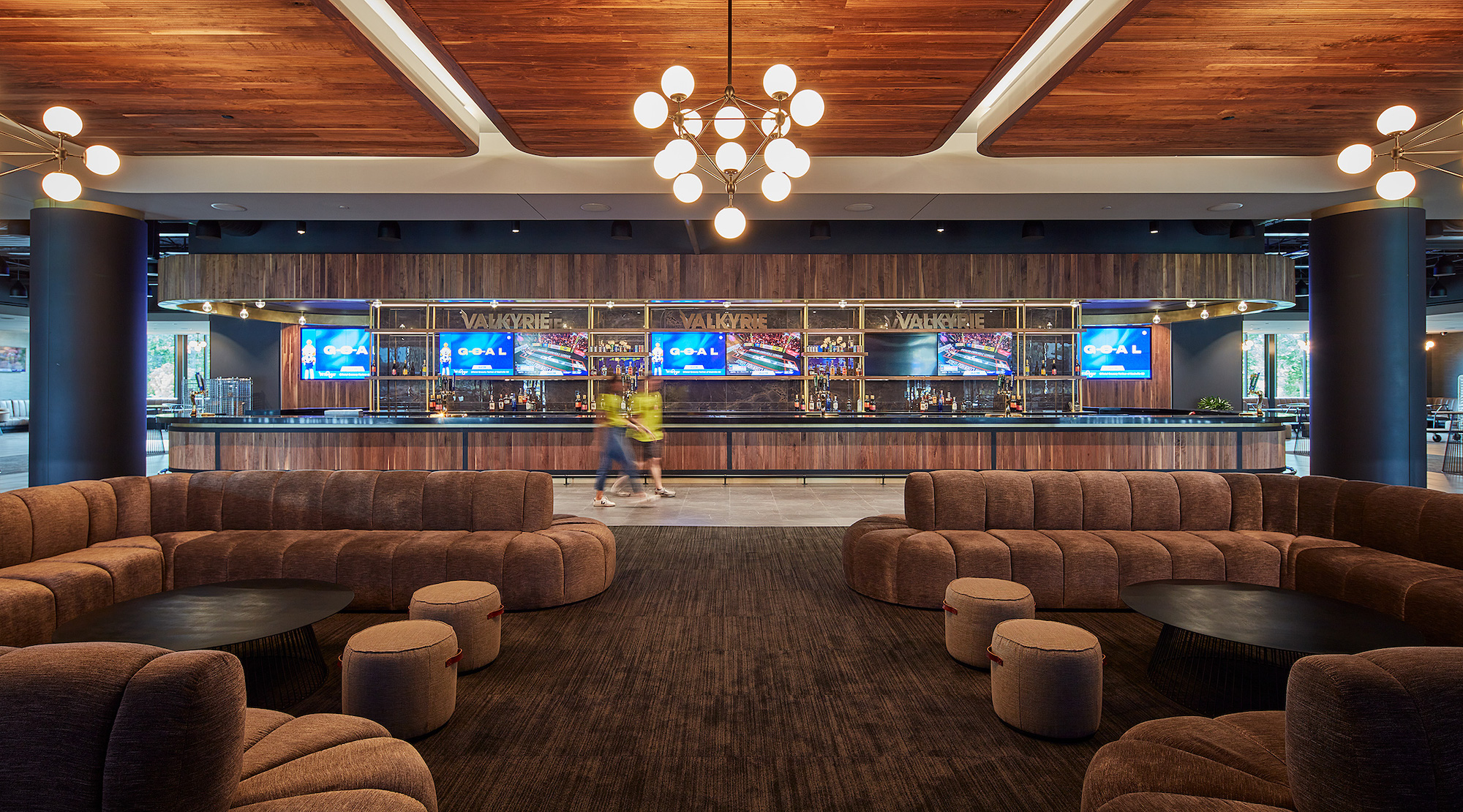
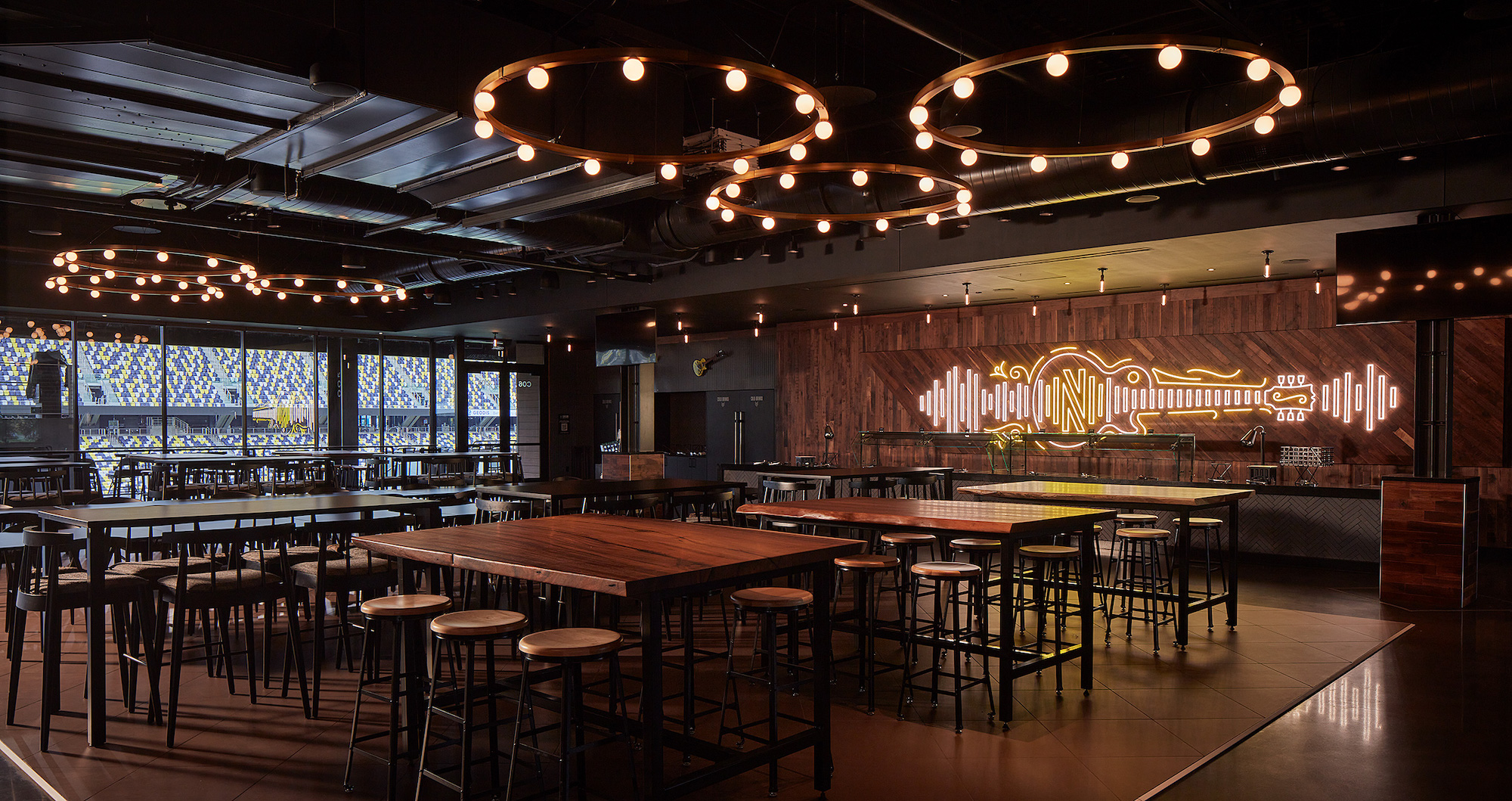

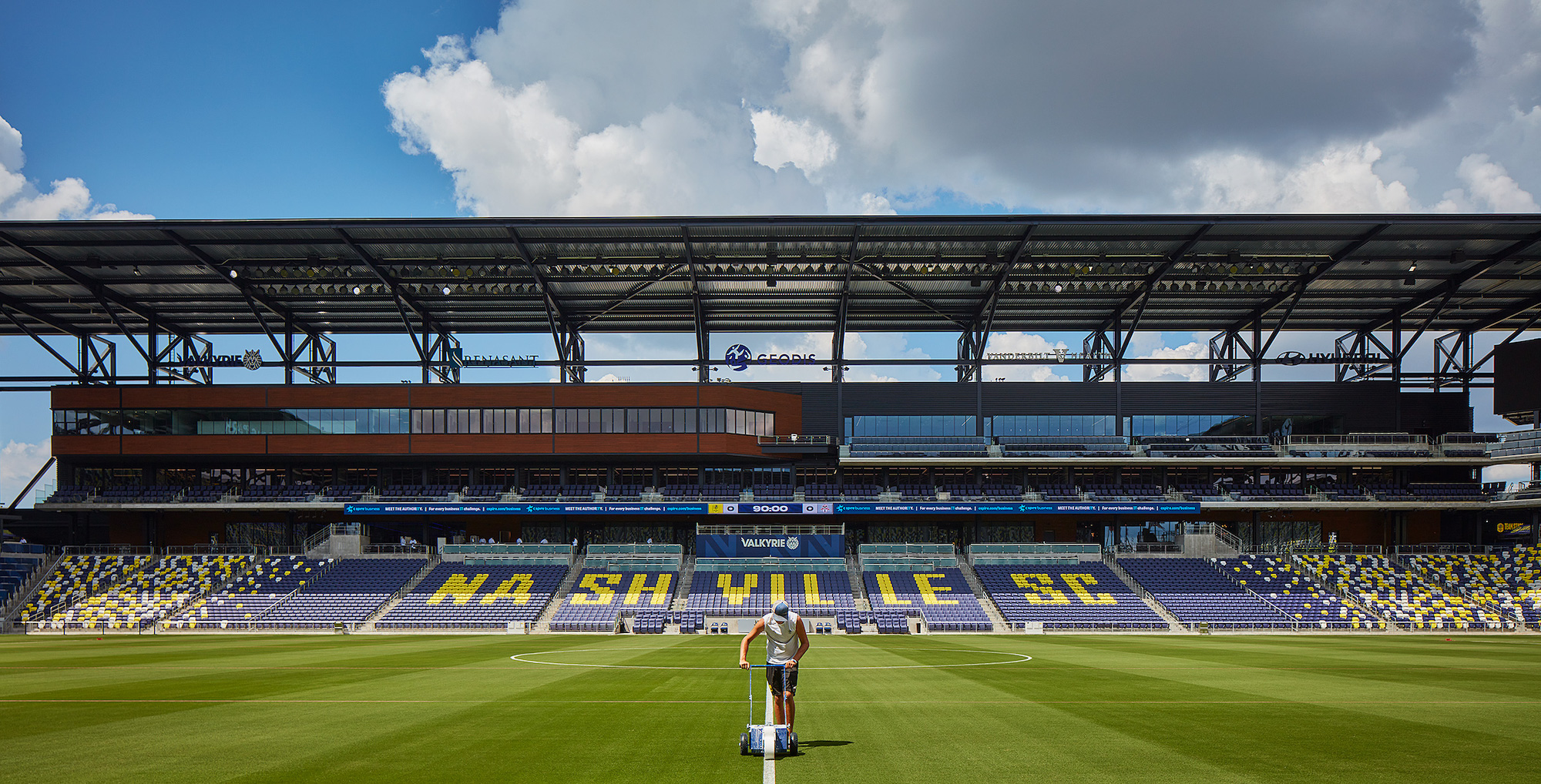
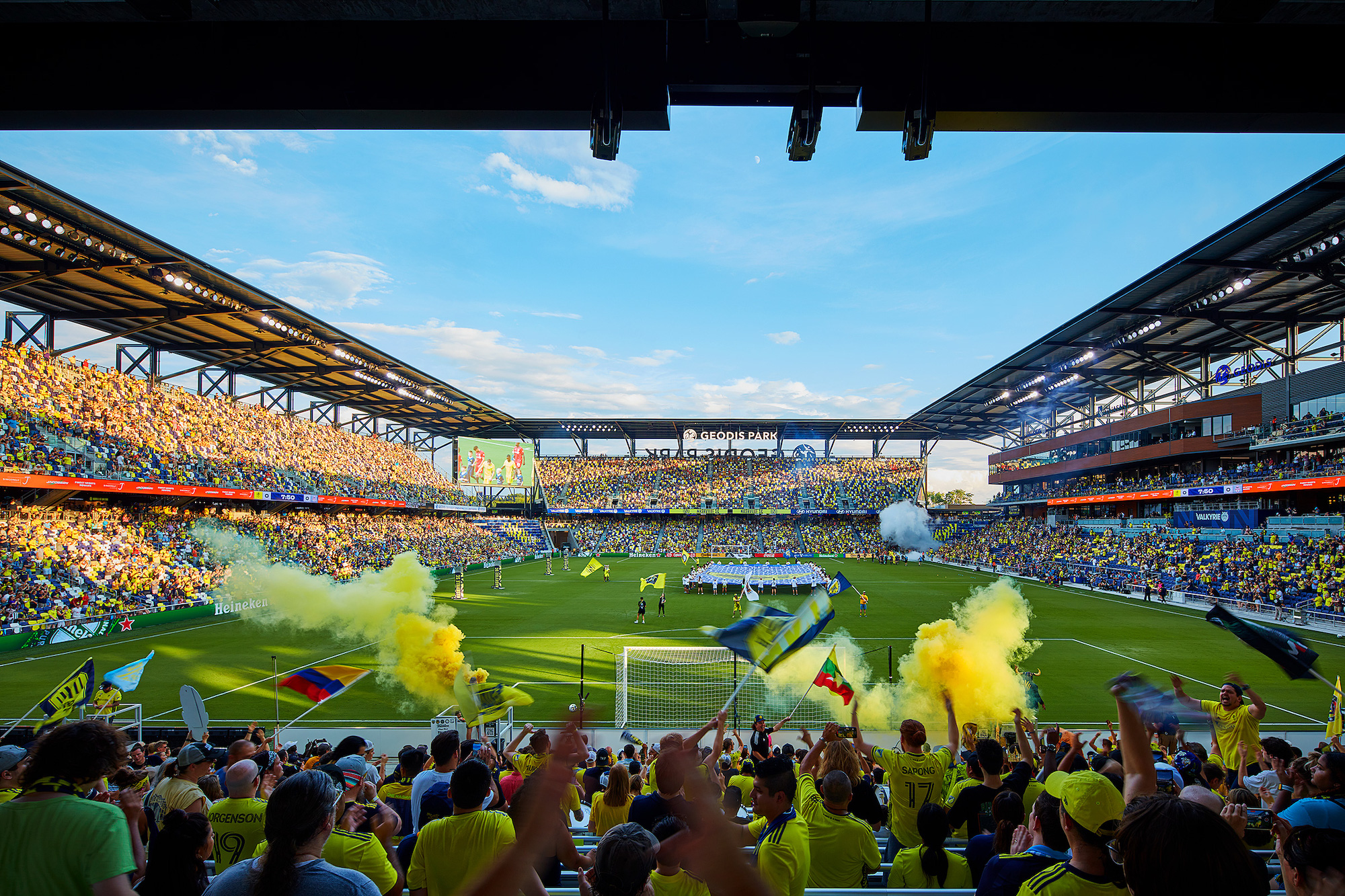

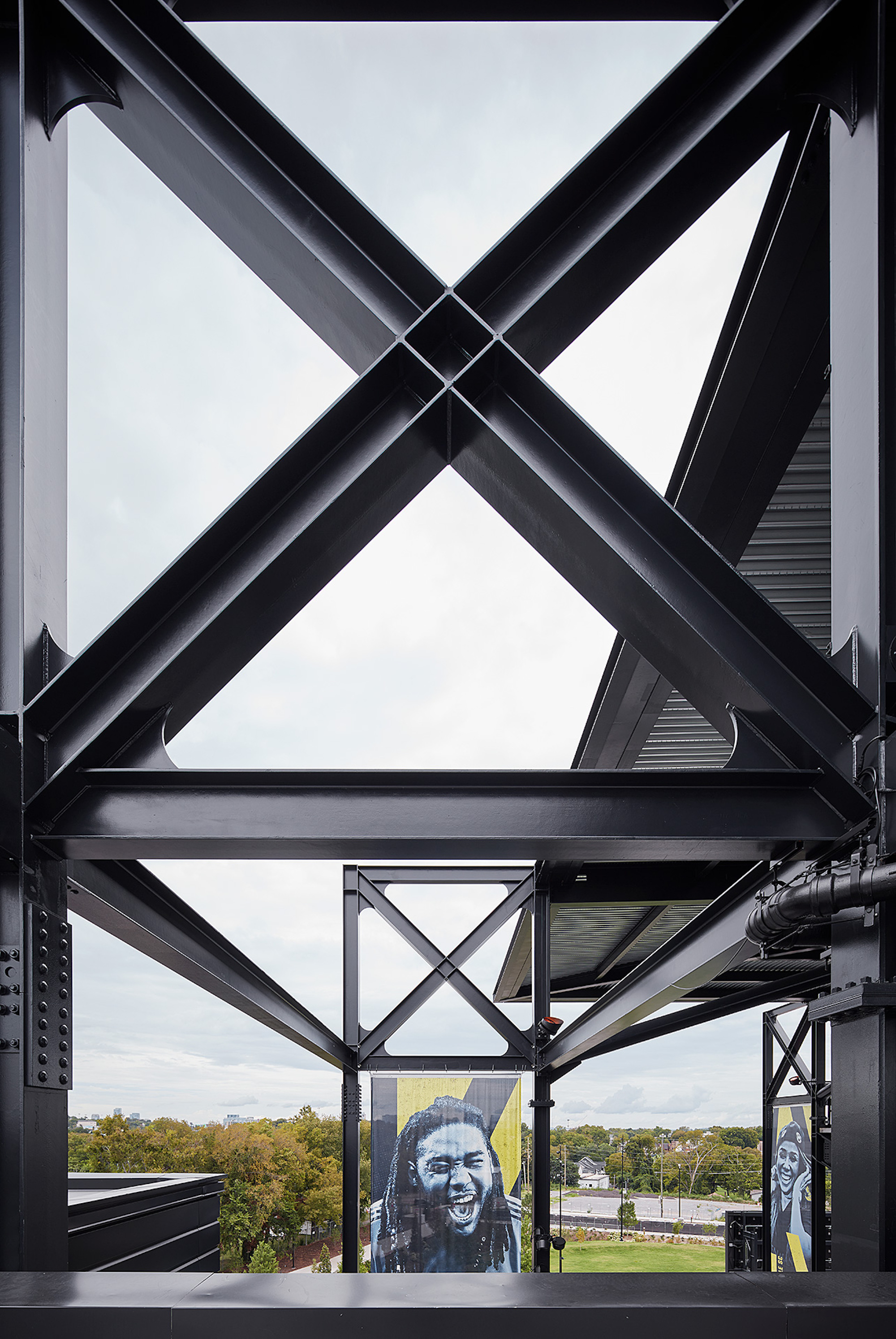
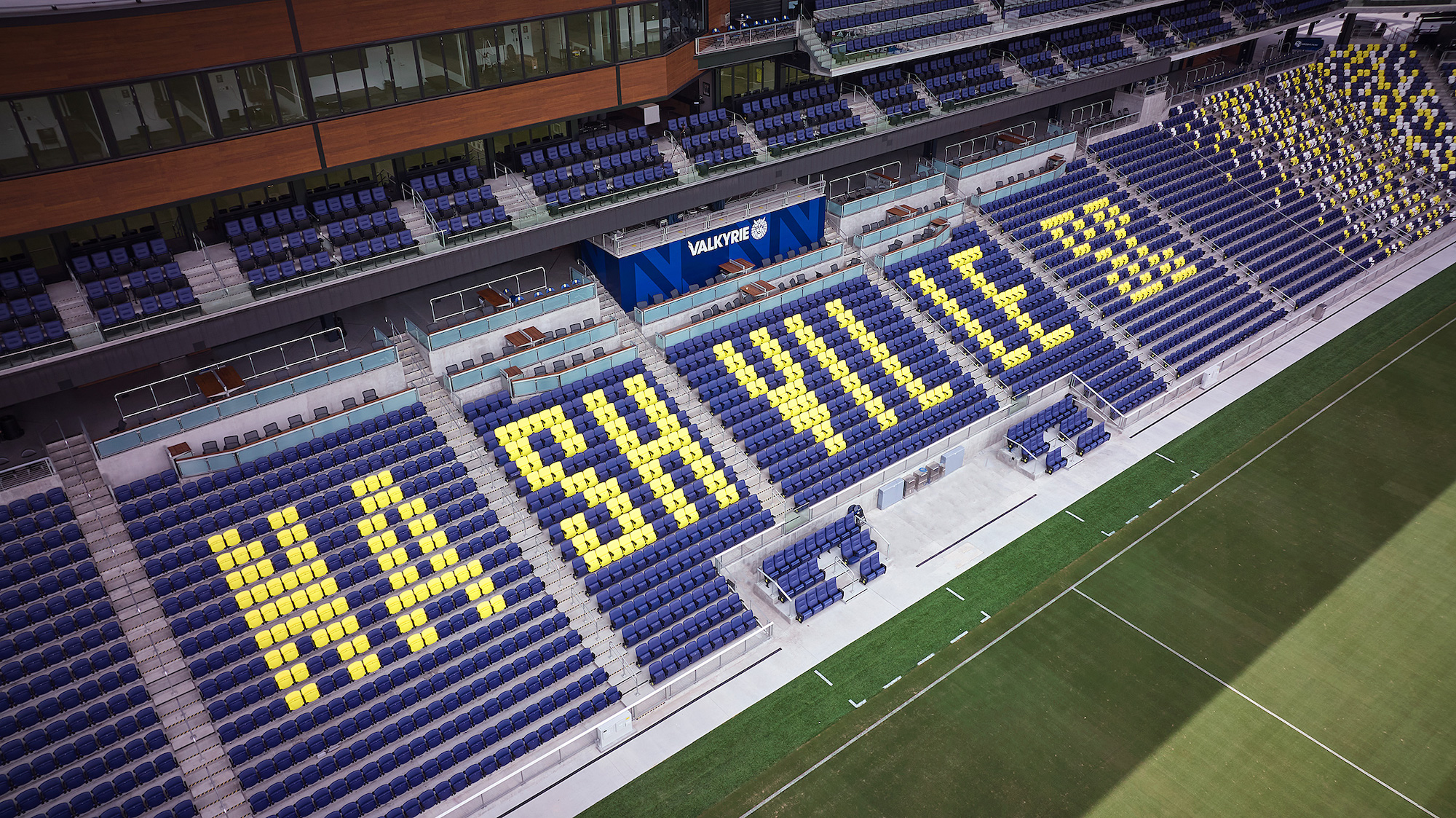
Related Stories
| Jul 18, 2014
Top Architecture Firms [2014 Giants 300 Report]
Gensler, Perkins+Will, NBBJ top Building Design+Construction's 2014 ranking of the largest architecture firms in the United States.
| Jul 18, 2014
2014 Giants 300 Report
Building Design+Construction magazine's annual ranking the nation's largest architecture, engineering, and construction firms in the U.S.
| Jul 17, 2014
A new, vibrant waterfront for the capital
Plans to improve Washington D.C.'s Potomac River waterfront by Maine Ave. have been discussed for years. Finally, The Wharf has started its first phase of construction.
| Jul 8, 2014
Does Zaha Hadid’s Tokyo Olympic Stadium have a design flaw?
After being criticized for the cost and size of her stadium design for the 2020 Olympics in Tokyo, a Japanese architect points out a major design flaw in the stadium that may endanger the spectators.
| Jul 8, 2014
Frank Lloyd Wright's posthumous gas station opens in Buffalo
Eighty-seven years after Frank Lloyd Wright designed an ornamental gas station for the city of Buffalo, the structure has been built and opened to the public—inside an auto museum.
| Jul 7, 2014
7 emerging design trends in brick buildings
From wild architectural shapes to unique color blends and pattern arrangements, these projects demonstrate the design possibilities of brick.
| Jul 7, 2014
A climate-controlled city is Dubai's newest colossal project
To add to Dubai's already impressive portfolio of world's tallest tower and world's largest natural flower garden, Dubai Holding has plans to build the world's largest climate-controlled city.
| Jul 3, 2014
Arthur Ashe Stadium the latest to tap Birdair
The United States Tennis Association (USTA) and ROSSETTI, the architect of record for the Arthur Ashe Stadium, tapped Birdair to supply a 210,000-square-foot, PTFE membrane, retractable roof, expected to be installed by 2016.
| Jul 2, 2014
First Look: Qatar World Cup stadium design references nomadic heritage
Organizers of the Qatar 2022 World Cup, the Supreme Committee for Delivery and Legacy, recently unveiled designs for the second stadium.
| Jul 2, 2014
Emerging trends in commercial flooring
Rectangular tiles, digital graphic applications, the resurgence of terrazzo, and product transparency headline today’s commercial flooring trends.


